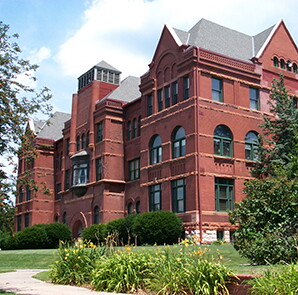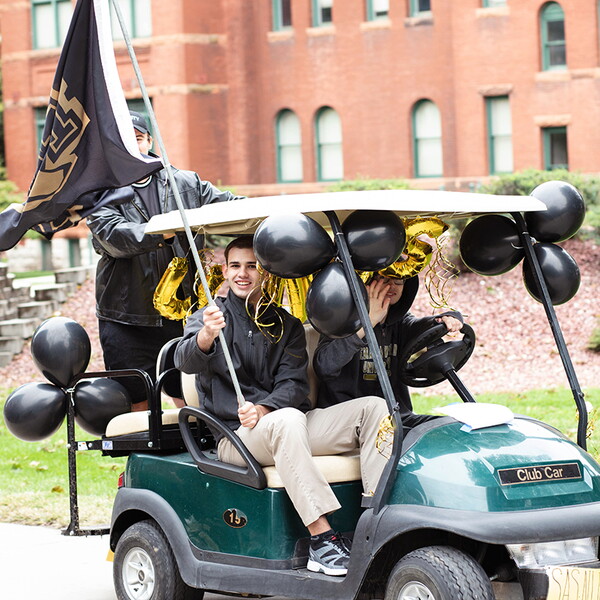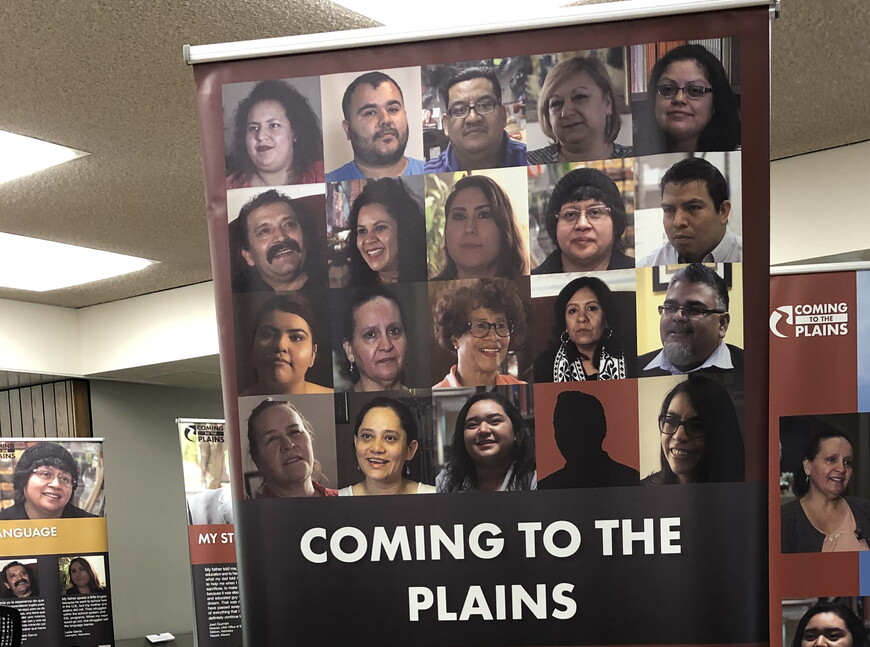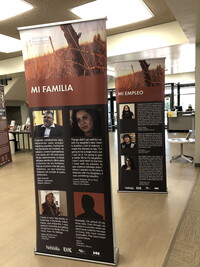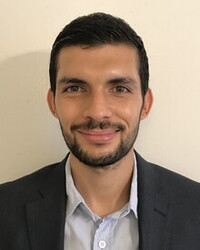'Border Kid' on the Plains
At Nebraska Wesleyan University, community members share the essential value of creating an environment where all can belong and thrive. Students and professors on campus actively work toward creating an inclusive environment where everyone is welcome. Assistant Professor of Spanish Dr. Jaime Cano strives to build a sense of belonging among Latinx students and connect them to the Latinx community in Lincoln.
“Since the beginning, I wanted to get involved with diversity and I wanted to start something. I wanted to because I knew it was here already.”
Beginning his third year teaching at Nebraska Wesleyan, Dr. Cano has already combined his passion for teaching and contributing to the Latinx community. Wesleyan Weekend 2022 is providing him with a new opportunity to pursue this passion. As part of Wesleyan Weekend, Cochrane-Woods Library has invited Dr. Cano to share his story as a Latinx immigrant. Dr. Cano’s talk, “Border Kid,” works in conjunction with the library’s new exhibit: “Coming to the Plains – Latinx Stories of Immigration to Central Nebraska.” University Librarian Julie Pinnell has brought exhibits like “Coming to the Plains” into Cochrane-Woods Library since she arrived at Nebraska Wesleyan in 2016. Her goal in bringing these exhibits to campus is to provide Nebraska Wesleyan students and the community with “enlightening experiences that promote self-directed learning and support the NWU curriculum.” While previous exhibits have been historical in nature, “Coming to the Plains” focuses on the current experiences of Nebraskans.
After Julie attended a conference involving one of the exhibit’s designers, she felt that it was “a perfect fit for NWU’s curriculum,” especially with its Nebraska origin. Following the announcement of the “Coming to the Plains” exhibit, professors in the departments of Modern Languages, Political Science, History, Sociology, and Social Work expressed to Julie their excitement to use the exhibit as a supplement to their courses. Along with the exhibit, Dr. Cano’s “Border Kid” presentation promises an excellent opportunity for students to expand their class studies.
Dr. Cano’s involvement in the “Coming to the Plains” exhibit began after his fellow professors recommended him as someone whose story fit right in with the exhibit theme. As a Latinx immigrant born on the U.S.–Mexico border in Mission, Texas, and who lived in Mexico until the third grade, Dr. Cano realizes that sharing his experiences in conjunction with this exhibit will further his commitment to promoting education on Latinx immigrant experiences.
“One of the main reasons I wanted to give this presentation is to tell the story of my family. Without them, I wouldn’t be here. I want to tell the story of my parents especially and how we came to the United States.” Through recounting his family’s story, Dr. Cano hopes that students and visitors realize that the media’s stereotypical portrayal of immigration is not completely accurate. While many Latinx immigrants share common experiences, each person has their own story.
Throughout his presentation, Dr. Cano will describe how his family’s journey of crossing to the U.S. brought more hardships than they encountered during their time in Mexico. While living in Mexico, his family was part of the middle class, but once they crossed over to the U.S., suddenly, he and his family joined the lower class. Regarding this change in economic status, Dr. Cano mentions, “I think the overall narrative of Latinos and other immigrants to the United States is that you come to prosper, to be better than where you were in your home country. My story doesn’t follow that. It’s the other way around, especially for the first many years. I want the presentation not to be a black-and-white narration of what immigration is. It’s more like there are greys, a lot of greys, people coming to the U.S. this way and not the way the media portrays it.”
Latinx Heritage month occurs from September 15 to October 15. As part of Wesleyan Weekend, the “Coming to the Plains” exhibit and Dr. Cano’s “Border Kid” presentation will recognize the Latinx culture and communities here in the United States, particularly in central Nebraska. During this month, Dr. Cano recognizes that he always carries his culture with him and that his support for the Latinx community is not contained to this specific month. He works all year long to contribute to the Latinx community and educate others on the community’s importance and diverse cultures. As Dr. Cano and Cochrane-Woods Library shine a spotlight on the stories of the Latinx community, Dr. Cano encourages members of the NWU community to carry on their support and recognition of Latinx culture throughout Latinx Heritage month and afterward.
As part of his ongoing contributions at NWU, Dr. Cano works with the NWU Latinos organization, founded by himself and a student, while also consistently staying in contact with the Latino Community Center in Lincoln and regularly bringing his experiences into his teaching. At Nebraska Wesleyan, the NWU Latinos organization works to help Latinx students grow and provides them with close relationships in the NWU community. This organization began last semester after a student brought the idea to Dr. Cano to create something for the Latinx community on campus. Through Dr. Cano and the student’s conversations, the NWU Latinos organization was born and has continued to grow.
In the classroom, Dr. Cano aims to use his story to connect with all students of all identities. In his Spanish language classes and Latinx cultural classes, including this semester’s “Latina/o Literature and Film” course, Dr. Cano hopes students will “connect his story to their own learning and their own being.” Dr. Cano combines his story and teaching practices to establish connections between students and the Latinx community that may otherwise be forgotten. He explains that “Just because we are a different color or speak different languages people tend to say, ‘they’re Latinos, they’re very different from us.’ Yes, we probably have our differences, but we also have a lot of similarities. More than people would think.”
Through incorporating his story into the classroom, Dr. Cano establishes connections with students who find similarities in their own unique stories. Students in Dr. Cano’s classes share with him their experiences of living in countries like Mexico and Guatemala and how they relate to his journey to Nebraska. While talking with Dr. Cano in his office, students also share similar values and family stories while discussing their individual experiences. Dr. Cano welcomes the Latinx students who convey their struggles and successes while also sharing some of his own struggles and successes.
By combining his passion for teaching with his passion for the Latinx community, Dr. Cano provides students of all identities with an innovative education that emphasizes the value of inclusion and the success of all individuals. While the Latinx community in Lincoln continues to expand, Dr. Cano wants those who identify as Latinx to feel recognized and like they belong. For people outside of the Latinx community, he hopes they can join him in supporting the Latinx population in Lincoln and on campus.
Dr. Cano’s “Border Kid” presentation begins at 2 p.m. on September 30 on the first floor of Cochrane-Woods Library. For questions or to make a reservation, email alumni [at] nebrwesleyan.edu (subject: Registration%20for%20%27Border%20Kid%27%20Presentation) (alumni[at]nebrwesleyan[dot]edu).
“Coming to the Plains - Latinx Stories of Immigration to Central Nebraska” opens September 29 and continues through March 20, 2023. This exhibit is free and open during library hours.
Story by Madison Laake ('23)

